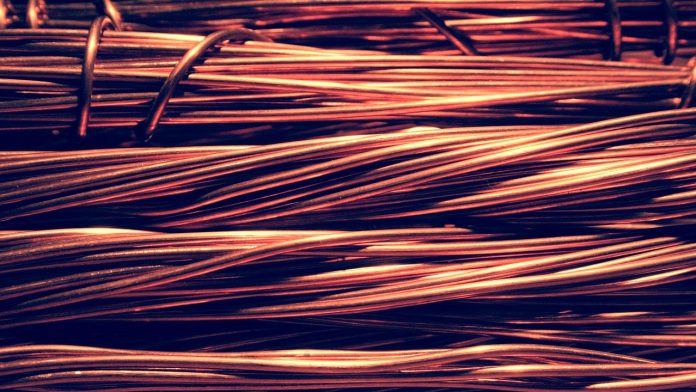By Danny Ervin
The demand for copper – the “metal of electrification” – is expected to double by 2035. The reason for this growth in demand is the change from a fossil fuel-based economy to one based on electricity from renewable energy sources like solar and wind power paired with utility scale battery storage. Unfortunately, the risk of a copper shortage is great. Unless there is a significant change in the time required to permit a copper mine in the U. S. and other countries, the goal of Net-Zero Emissions by 2050 will not be accomplished.
Copper is used in many of the necessary components for the new energy economy. Batteries for electric vehicles and cables to carry electricity from distributed generation assets like wind and solar facilities require a significant amount of copper. Currently, the direction of energy production is clear but the timing of the change is not certain. However, it is certain that the supply of copper is already critically important.
Approximately 90 pounds of copper is required for an electric vehicle battery. In fact, there is about 2.5 times the amount of copper in an electric vehicle compared to a traditional automobile. A single 3-megawatt offshore wind turbine requires a whopping 4.7 tons of copper. In addition, the number of batteries required to store electricity from intermittent sources like solar and wind will be staggering. Estimates suggest the global need for copper in utility-scale storage will reach more than 4,000 metric tons by 2027. Again, the timing may not be accurate but even a delay until 2035 is problematic.
The above-mentioned uses of copper are but a very few. The total amount of copper that will be needed in the years ahead is great, especially if you add all of its other uses, ranging from building materials and electrical wiring to weapons systems and industrial products. The problem is that as demand for copper has grown, its production in the U.S. has gone down by almost half in the last quarter century.
Today, the U.S. depends on copper imports to meet 40% of its needs. Five of the world’s ten largest copper mines are in Chile and three are in Peru, both longtime trading partners. But the years when the U.S. could rely on South American resources are in the past. Government subsidized Chinese companies have been buying mines in South America and beyond, with the goal of tightening China’s grip on the global extraction and processing of battery metals. Meanwhile, world demand for copper is climbing, and not enough new mines are being developed to meet the demand.
Bloomberg estimates demand for copper will grow by 53% by 2040, but supplies from mining will climb only 16%. Analysts at Wood Mackenzie estimate the world will be short about 6 million tons of copper by the next decade, meaning 12 huge mines will need to come on board by then. But unless significant new supplies become available, climate goals will be “short-circuited and remain out of reach,” S&P Global says.
Yet, astonishingly, the U.S. Government doesn’t include copper in its list of 50 minerals and metals deemed “critical” for national security and the nation’s economy. This is a serious oversight. If a copper shortage occurs, the Government wouldn’t be able to take emergency measures under the Defense Production Act to increase domestic production. There are an estimated 48 trillion tons of copper reserves in states like Arizona, Utah, Montana and New Mexico. But a Byzantine permitting process has meant that opening a new mine takes on average nearly 17 years from the idea for a mine to first production.
Before it’s too late, Congress needs to streamline the mine permitting process. The goal should be to bolster domestic mining to prevent our dependence on imported battery metals from rising much higher than it already is.
Originally published by RealClearEnergy. Republished with permission.



























It isn’t as though there is no copper in the USA. We shut down the [in]famous Berkeley Pit in Western Montana in the 1980s because copper prices were too low to support further exploitation of ‘the richest hill on earth’.